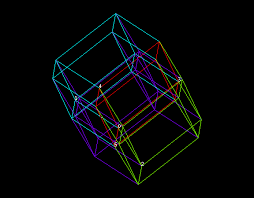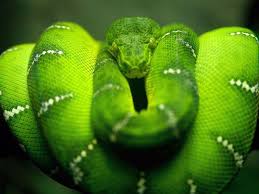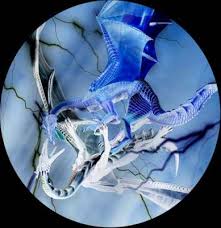Screen Savers Biography
A window screen, insect screen or bug screen is a metal wire, fiberglass, or other synthetic fiber mesh, stretched in a frame of wood or metal, designed to cover the opening of an open window. Its primary purpose is to keep leaves, debris, insects, birds, and other animals from entering a building or a screened structure such as a porch, while permitting fresh air-flow. Most houses in Australia, the United States and Canada have screens on all operable windows, which are most useful in areas that have large mosquito populations. Formerly, screens in North America were usually replaced with glass storm windows in the winter, but now the two functions are usually combined in combination storm and screen windows, which allow glass and screen panels to slide up and down.The most common materials used for insect screening material are aluminum and fiberglass. Aluminum is generally available in natural aluminum or in an applied black or charcoal color, which make the screening much less visible. Fiberglass is available in light gray as well as charcoal colors, the charcoal again offering better viewing and appearance. Fiberglass is less expensive, and has the advantage of not "denting" when hit or pushed, but it is somewhat more opaque than aluminum. For this reason, dark aluminum allows a better view of windows from the exterior, detracting less than fiberglass from the architectural effect of traditional divided-light window styles.
For applications requiring greater strength, such as screened doors, nylon and polyester screening are also available.
Bronze insect screening is much more expensive, but gives much longer service than either aluminum or fiberglass. When first installed, it has a bright gold color; this weathers to an unobtrusive dark charcoal within a year or less. Weathered bronze darkens the external appearance of windows to approximately the same degree as charcoal or black aluminum. Bronze is somewhat more resistant to denting than aluminum. Less common screen fabrics include copper, brass, stainless steel, and galvanized steel. For coastal locations, corrosion resistance usually requires the use of bronze or synthetic screening fabric.
Some manufacturers offer screening that promise to substantially reduce the visibility of the screening. One material generally recognized as semi-transparent, inLighten®, was marketed for several years but its manufacturer discontinued the product in early 2011.
In addition to insect screening, denser screen types that also reduce sunlight and heat gain are available. These offer significant potential energy savings in hot climates.
Several manufacturers offer screens that roll into a pocket when not in use. These are available for casement windows as well as other types of window and door openings.
Do-it-yourself screen and frame replacement kits are widely available at hardware and home improvement stores. One kind is composed of straight aluminum sides (which can be cut to size) and plastic corner inserts. Screen replacement kits usually consist of a roll of nylon screening fabric and a generous supply of rubber spline.
Temporary, removable screens that fit within window tracks of double-hung windows are a common expedient widely available in hardware and home improvement stores. Typically 12 to 18 inches high, these screens are wedged beneath the lower sash of a double-hung window and secured laterally by the tracks of the window. A sliding mechanism allows the screen to be adjusted laterally to fit the width of most windows, which also allows the screen to fit securely within the tracks below the open sash.








A window screen, insect screen or bug screen is a metal wire, fiberglass, or other synthetic fiber mesh, stretched in a frame of wood or metal, designed to cover the opening of an open window. Its primary purpose is to keep leaves, debris, insects, birds, and other animals from entering a building or a screened structure such as a porch, while permitting fresh air-flow. Most houses in Australia, the United States and Canada have screens on all operable windows, which are most useful in areas that have large mosquito populations. Formerly, screens in North America were usually replaced with glass storm windows in the winter, but now the two functions are usually combined in combination storm and screen windows, which allow glass and screen panels to slide up and down.The most common materials used for insect screening material are aluminum and fiberglass. Aluminum is generally available in natural aluminum or in an applied black or charcoal color, which make the screening much less visible. Fiberglass is available in light gray as well as charcoal colors, the charcoal again offering better viewing and appearance. Fiberglass is less expensive, and has the advantage of not "denting" when hit or pushed, but it is somewhat more opaque than aluminum. For this reason, dark aluminum allows a better view of windows from the exterior, detracting less than fiberglass from the architectural effect of traditional divided-light window styles.
For applications requiring greater strength, such as screened doors, nylon and polyester screening are also available.
Bronze insect screening is much more expensive, but gives much longer service than either aluminum or fiberglass. When first installed, it has a bright gold color; this weathers to an unobtrusive dark charcoal within a year or less. Weathered bronze darkens the external appearance of windows to approximately the same degree as charcoal or black aluminum. Bronze is somewhat more resistant to denting than aluminum. Less common screen fabrics include copper, brass, stainless steel, and galvanized steel. For coastal locations, corrosion resistance usually requires the use of bronze or synthetic screening fabric.
Some manufacturers offer screening that promise to substantially reduce the visibility of the screening. One material generally recognized as semi-transparent, inLighten®, was marketed for several years but its manufacturer discontinued the product in early 2011.
In addition to insect screening, denser screen types that also reduce sunlight and heat gain are available. These offer significant potential energy savings in hot climates.
Several manufacturers offer screens that roll into a pocket when not in use. These are available for casement windows as well as other types of window and door openings.
Do-it-yourself screen and frame replacement kits are widely available at hardware and home improvement stores. One kind is composed of straight aluminum sides (which can be cut to size) and plastic corner inserts. Screen replacement kits usually consist of a roll of nylon screening fabric and a generous supply of rubber spline.
Temporary, removable screens that fit within window tracks of double-hung windows are a common expedient widely available in hardware and home improvement stores. Typically 12 to 18 inches high, these screens are wedged beneath the lower sash of a double-hung window and secured laterally by the tracks of the window. A sliding mechanism allows the screen to be adjusted laterally to fit the width of most windows, which also allows the screen to fit securely within the tracks below the open sash.
Screen Savers
Screen Savers
Screen Savers
Screen Savers
Screen Savers
Screen Savers
Screen Savers
Screen Savers
Screen Savers
15 Min Relaxing Aquarium Video Hq Screen Saver
Really Slick Screen Saver
No comments:
Post a Comment